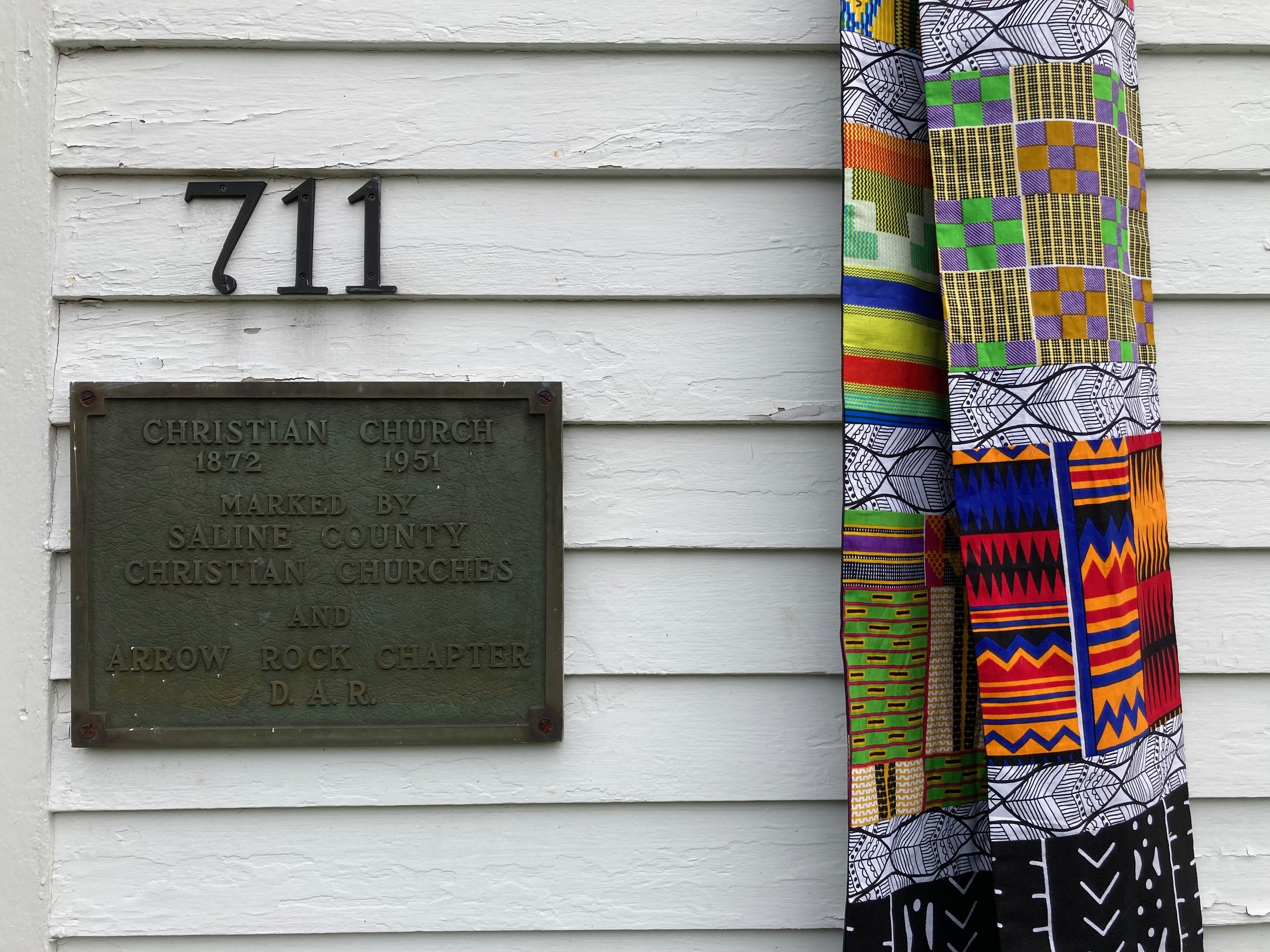
Celebrating Five Years of Residencies
in Arrow Rock, MO
Persimmon Creek Residency holds five-year reunion event in Arrow Rock
On June 21, 2025, the Persimmon Creek Writers and Artists Residency returned to the Village of Arrow Rock, Missouri, for a special reunion event celebrating and reflecting upon five years of creative residencies. Guests included returning residents X.C. Atkins, Glenn North, Brian Palmer and Sonie Joi Thompson-Ruffin, as well as members of the Persimmon Creek advisory board and the Arrow Rock community. The event was free and open to the public.
Also on June 21, the residency program celebrated the work of former resident and renowned Columbia painter Byron Smith, who sadly passed away last summer. The show, entitled Selected Works of Byron Smith, was made possible to the generous efforts of Byron’s friends and family, among them Greig Thompson, formerly of the State Historical Society of Missouri.
Established in 2021, the Persimmon Creek Writers and Artists Residency is designed to bring emerging and established writers, artists, and musicians to live and work in historic Arrow Rock, located in Saline County, Missouri. The residency program was created by an advisory board of private citizens, including current and former inhabitants of Arrow Rock, Marshall, Columbia, and Kansas City. In addition to hosting creative residents and supporting their work, the program hopes to introduce the Village of Arrow Rock to a wider national creative audience; recognize the historic presence of African American lives in Arrow Rock; and enrich present-day awareness of this one-time vibrant community. Currently, the program is funded by a grant from the Arrow Rock Improvement Committee and gifts from private donors. In addition, the residency’s advisory board works with the nonprofit Experience Arrow Rock to ensure future funding and resources.
“The first Persimmon Creek residents came to Arrow Rock almost exactly a year after Americans witnessed the horrific murder of George Floyd,” says advisory board member Myra Christopher of Arrow Rock and Kansas City. “Residents of Arrow Rock, like people across the country, struggled to find what moral theologian H. Richard Niebuhr referred to as a ‘fitting response’ to this tragic event.” She adds, “To us, the mechanism for facilitating such conversations productively was via art, literature, and music created by African Americans or others deeply embedded in African American history and culture, including the scarred history of our own village. Each of our residents has brought something precious and have in a special way become integrated into the history of our community.”
Alumni of the Persimmon Creek program also include novelist, memoirist and scholar Karla FC Holloway of Wake Forest, North Carolina. “Some months later, I must admit it feels like a magical interlude,” Holloway said in 2023, “until I look at the chapters—yes, plural!—I drafted while there. As much as it offers a community of engaging, interested readers and auditors, it will leave with you an inspired locale, a gathering of friends, and the unyielding sense of how and why art matters.” And she adds this warning: “Something of it—a place, a person, a scene, a gathering of irises or clutch of peonies—will quite likely slip into the project you bring, and it and you will be the better for it!”
Kansas City writer and fiber artist Sonié Joi Thompson-Ruffin found similar creative value in her Persimmon Creek residency experience. “One of the most fulfilling experiences of my career as an artist was my residency at Arrow Rock, where I had the privilege of immersing myself in the African American cultural scene,” she said. “This comprehensive and enlightening experience was invaluable and has left a lasting impression on me.”
Similarly, fiction writer, memoirist, and zine creator X.C. Atkins of Los Angeles, California, summarized the usefulness of the time and space offered by the Persimmon Creek program. “The main thing the Arrow Rock experience provides is a generous space, generous hosts, and a community of kind people who sincerely want you to make the most out of your time there,” Atkins says. “With the promise of uninterrupted solitude, I was able to write a good deal of short stories and enjoy my privacy while still having the option to enjoy the town and its historical perks.”
The Persimmon Creek Residency was first inspired by the long-time presence of the historic African American community in Arrow Rock. The cottage utilized by residents stands in the footprint of the parsonage for Brown’s Chapel Freewill Baptist Church, founded in 1869. “As a native Saline Countian with direct ties to Black descendants of Arrow Rock and nearby Pennytown, I am profoundly proud of the work that has been and is currently being done to shine a positive light on contributions and impact African Americans had on this area,” says advisory board member Clarence Smith of Kansas City. “Persimmon Creek reinforces my desire and need to embrace the importance of teaching, preserving, and celebrating African American history. In the current climate where omitting and distorting history is being commanded, the work so many of us are doing with Persimmon Creek is of extreme importance.”
The Persimmon Creek Residency takes its name from the 1938 children’s novel Persimmon Creek, written by Marshall author Nellie Page Carter. Designed for young readers across races, the book tells the story of two Black children who travel from Kansas City to visit their grandmother in a settlement near Arrow Rock. It was the first of Carter’s four novels, and the author based her work on three years of research among Arrow Rock’s residents of all colors. As a result, Persimmon Creek offers a rare glimpse into the village’s historic African American community, and it reflects important Black landmarks, including Brown’s Chapel, Brown Lodge, the Black schoolhouse, and Whittie’s Over East restaurant and dance hall.
For questions or more information, please visit our FAQ page or email us via persimmoncreekresidency@gmail.com
Persimmon Creek graphic by Dan Auman
